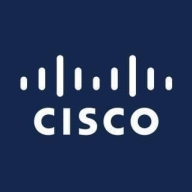

IBM Security QRadar and Cisco Secure Endpoint are prominent players in the cybersecurity domain, focusing on security information event management (SIEM) and endpoint protection respectively. IBM QRadar gains prominence due to its advanced analytics and centralized monitoring, whereas Cisco excels in endpoint integration and ease of deployment.
Features: IBM Security QRadar provides advanced threat detection using Watson AI, effective data correlation, and comprehensive security event insights. It offers extensive SIEM capabilities and log management. Cisco Secure Endpoint highlights robust real-time monitoring, seamless integration within the Cisco ecosystem, and effective endpoint protection capabilities.
Room for Improvement: IBM Security QRadar could improve its user interface complexity and third-party integration capabilities. Better threat intelligence and a reduction in false positives would enhance its appeal. Cisco Secure Endpoint can benefit from improved integration with third-party solutions, enhanced endpoint features, and better reporting and analytics capabilities.
Ease of Deployment and Customer Service: IBM Security QRadar offers diverse deployment options including on-premises and cloud solutions, supported by a global customer service network, though support experiences may vary. Cisco Secure Endpoint stands out with smooth integration in the Cisco ecosystem, supporting efficient deployment across various cloud environments, and has a reputation for responsive customer service, especially with enterprise agreements.
Pricing and ROI: IBM Security QRadar is positioned at a higher price point reflecting its extensive features and enterprise readiness, with users acknowledging the value in its analytics capabilities. Cisco Secure Endpoint offers competitive pricing, with substantial appeal within Cisco’s enterprise agreements, delivering solid ROI by providing cost-effective endpoint protection.
With SOAR, the workflow takes one minute or less to complete the analysis.
AWS gives the chance to implement a solution out of the box with use cases that are already in IBM Security QRadar.
Investing this amount was very much worth it for my organization.
Cisco has good technical support, especially considering these are newer solutions compared to traditional routing and switching products.
They assist with advanced issues, such as hardware or other problems, that are not part of standard operations.
Support needs to understand the issue first, then escalate it to the engineering team.
The support is really good; for instance, if a critical ticket is submitted, you will get paged right away as it gets logged, and their analyst will look into it, letting you know as soon as possible so you can work on it.
Cisco Secure Endpoint is definitely scalable.
For EPS license, if you increase or exceed the EPS license, you cannot receive events.
We have not encountered any problems.
I think QRadar is stable and currently satisfies my needs.
The product has been stable so far.
The forensic capabilities need enhancement, especially for deep forensic data collection.
We receive logs from different types of devices and need a way to correlate them effectively.
If AI-related support can suggest rules and integrate with existing security devices like MD, IPS, this SIM can create more relevant rules.
IBM Security QRadar does not support Canvas, so we had to create custom scripts and workarounds to pull logs from Canvas.
Cisco is aggressive in pricing, making it competitive and sometimes even cheaper than other good products like CrowdStrike, Microsoft Defender, or SentinelOne.
Splunk is more expensive than IBM Security QRadar.
It was costly mainly because of the value you can get right now compared to other solutions.
It depends on how much you want to spend.
Cisco Secure Endpoint is very good in machine learning, which allows it to secure offline contents even if not connected to the internet.
Recently, I faced an incident, a cyber incident, and it was detected in real time.
IBM Security QRadar gives the opportunity to improve the time to market of the releases with a great evaluation of cybersecurity breaches.
IBM is seeking information about IBM QRadar because a part of QRadar, especially in the cloud, has been sold to Palo Alto.
| Product | Market Share (%) |
|---|---|
| IBM Security QRadar | 1.4% |
| Cisco Secure Endpoint | 1.6% |
| Other | 97.0% |


| Company Size | Count |
|---|---|
| Small Business | 21 |
| Midsize Enterprise | 14 |
| Large Enterprise | 21 |
| Company Size | Count |
|---|---|
| Small Business | 90 |
| Midsize Enterprise | 36 |
| Large Enterprise | 103 |
Cisco Secure Endpoint is a comprehensive endpoint security solution that natively includes open and extensible extended detection and response (XDR) and advanced endpoint detection and response (EDR) capabilities. Secure Endpoint offers relentless breach protection that enables you to be confident, be bold, and be fearless with one of the industry’s most trusted endpoint security solutions. It protects your hybrid workforce, helps you stay resilient, and secures what’s next with simple, comprehensive endpoint security powered by unique insights from 300,000 security customers and deep visibility from the networking leader.
Cisco Secure Endpoint was formerly known as Cisco AMP for Endpoints.
Reviews from Real Users
Cisco Secure Endpoint stands out among its competitors for a number of reasons. Two major ones are its ability to enable developers to easily secure their endpoints with one single operation using its management console and its advanced alerting techniques.
Tim C., an IT manager at Van Der Meer Consulting, writes, "The solution makes it possible to see a threat once and block it everywhere across all endpoints and the entire security platform. It has the ability to block right down to the file and application level across all devices based on policies, such as, blacklisting and whitelisting of software and applications. This is good. Its strength is the ability to identify threats very quickly, then lock them and the network down and block the threats across the organization and all devices, which is what you want. You don't want to be spending time working out how to block something. You want to block something very quickly, letting that flow through to all the devices and avoiding the same scenario on different operating systems."
Wouter H., a technical team lead network & security at Missing Piece BV, notes, "Any alert that we get is an actionable alert. Immediately, there is information that we can just click through, see the point in time, what happened, what caused it, and what automatic actions were taken. We can then choose to take any manual actions, if we want, or start our investigation. We're no longer looking at digging into information or wading through hundreds of incidents. There's a list which says where the status is assigned, e.g., under investigation or investigation finished. That is all in the console. It has taken away a lot of the administration, which we would normally be doing, and integrated it into the console for us."
IBM Security QRadar (recently acquired by Palo Alto Networks) is a security and analytics platform designed to defend against threats and scale security operations. This is done through integrated visibility, investigation, detection, and response. QRadar empowers security groups with actionable insights into high-priority threats by providing visibility into enterprise security data. Through centralized visibility, security teams and analysts can determine their security stance, which areas pose a potential threat, and which areas are critical. This will help streamline workflows by eliminating the need to pivot between tools.
IBM Security QRadar is built to address a wide range of security issues and can be easily scaled with minimal customization effort required. As data is ingested, QRadar administers automated, real-time security intelligence to swiftly and precisely discover and prioritize threats. The platform will issue alerts with actionable, rich context into developing threats. Security teams and analysts can then rapidly respond to minimize the attackers' strike. The solution will provide a complete view of activity in both cloud-based and on-premise environments as a large amount of data is ingested throughout the enterprise. Additionally, QRadar’s anomaly detection intelligence enables security teams to identify any user behavior changes that could be indicators of potential threats.
IBM QRadar Log Manager
To better help organizations protect themselves against potential security threats, attacks, and breaches, IBM QRadar Log Manager gathers, analyzes, preserves, and reports on security log events using QRadar Sense Analytics. All operating systems and applications, servers, devices, and applications are converted into searchable and actionable intelligent data. QRadar Log Manager then helps organizations meet compliance reporting and monitoring requirements, which can be further upgraded to QRadar SIEM for a more superior level of threat protection.
Some of QRadar Log Manager’s key features include:
Reviews from Real Users
IBM Security QRadar is a solution of choice among users because it provides a complete solution for security teams by integrating network analysis, log management, user behavior analytics, threat intelligence, and AI-powered investigations into a single solution. Users particularly like having a single window into their network and its ability to be used for larger enterprises.
Simon T., a cyber security services operations manager at an aerospace/defense firm, notes, "The most valuable thing about QRadar is that you have a single window into your network, SIEM, network flows, and risk management of your assets. If you use Splunk, for instance, then you still need a full packet capture solution, whereas the full packet capture solution is integrated within QRadar. Its application ecosystem makes it very powerful in terms of doing analysis."
A management executive at a security firm says, "What we like about QRadar and the models that IBM has, is it can go from a small-to-medium enterprise to a larger organization, and it gives you the same value."
We monitor all Endpoint Detection and Response (EDR) reviews to prevent fraudulent reviews and keep review quality high. We do not post reviews by company employees or direct competitors. We validate each review for authenticity via cross-reference with LinkedIn, and personal follow-up with the reviewer when necessary.